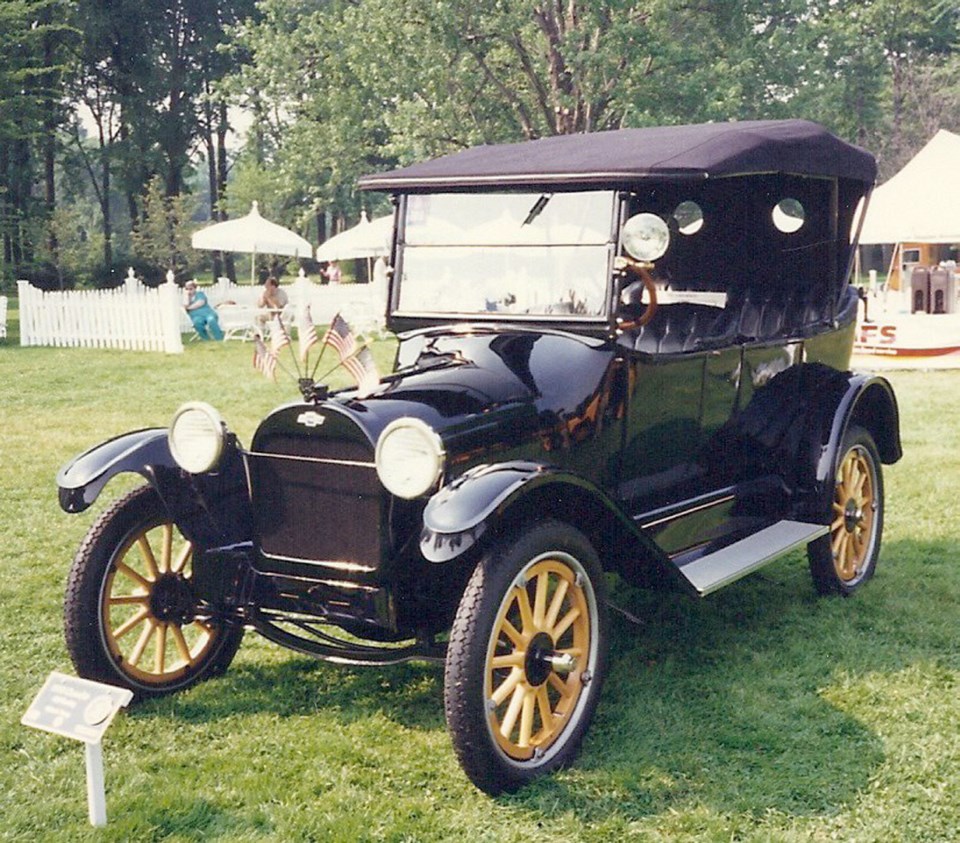The Chevrolet car and General Motors founder Billy Durant were closely intertwined even before Chevrolet became part of GM. Both played an important role in GM’s early history.
In the 1880s, William Crapo (Billy) Durant, a charismatic Flint, Michigan, entrepreneur, joined with local hardware merchant Dallas Dort to parlay a stylish little road cart into Durant-Dort Carriage Co., the world’s largest carriage maker. They became wealthy, but success made Durant restless. Seeing a future for the emerging automobile, he bought the failing Buick Motor Car Co. of Detroit in 1904 and relocated it to Flint. With visions of a grand automobile empire, Durant established a holding company called General Motors in 1908.
Durant then went on an acquisition binge. With Buick as his base, he brought, among others, Oldsmobile and Cadillac into GM. But he was soon overextended and in 1910 lost control of GM to the bankers, although he still remained on GM’s board of directors.
Undaunted, in 1911 Durant quietly established another holding company called Republic Motors, a kind of new General Motors. In Flint, he was also instrumental in organizing Mason Motor Co. to build engines, and Little Motor Car Co., whose cars were powered by Mason engines.
Durant soon lost interest in Republic and hired Buick racing driver Louis Chevrolet to design a new car for him. The Chevrolet Classic Six that Chevrolet created was larger and more expensive than Durant wanted, but since the announcement had been made, he proceeded with production. Durant and Louis Chevrolet soon parted company, but the Chevrolet car and name stayed.
Both the Chevrolet Classic Six and Little were offered for sale, and while the Chevrolet continued for several years, the lower-priced four-cylinder Little was the better seller. It was kept until a new, small Chevrolet could be designed.
This was the Series H Chevrolet that appeared in 1914 bearing the soon-to-be-famous bow-tie badge. It had a 2.8-litre overhead-valve four-cylinder engine and came with the intriguing names Baby Grand (touring) and Royal Mail (roadster). In 1915, the dressed-up Amesbury Special joined the lineup. They were the first Chevrolets selling for under $1,000.
Chevrolet was well received enough for Durant to take aim at Henry Ford’s all-conquering Model T with the Chevrolet 490, a stripped down version of the Series H. It was introduced at the New York Motor Show in January 1915 and went into production in June.
To compete directly with Ford, Durant promoted a price of $490 (thus the name), the same as the Model T touring. The introductory price was actually $550, but could be reduced to $490 by deleting the optional electric starter and lights. Henry Ford responded by reducing the Model T to $440.
The 490 was more modern than the Model T. It had overhead valves compared with Ford’s side valves, and a regular three-speed, floor-shift transmission, not Ford’s pedal-operated, two-speed, planetary one. One unusual characteristic of the Chevrolet was a fragile rear axle that emitted what became known as the “Chevrolet hum.”
The Ford and Chevy were about the same size. The 490’s wheelbase was 2,591 millimetres, compared with the Model T’s 2,540.
The Chevrolet 490 was well received and attracted more than 46,000 orders within a few weeks of introduction. Its success allowed Durant to quietly accumulate General Motors stock, and on Sept. 16, 1915, he triumphantly announced to GM’s board of directors that he was again in control. Durant had used Chevrolet to regain control of GM exactly seven years after originally incorporating it. He would bring Chevrolet into GM in 1918.
The 490 continued to be manufactured with regular improvements. Annual sales climbed from 13,600 in 1915 to 115,000 by 1919. While this seemed impressive, it paled beside Ford’s 1915 sales of half a million Model Ts, rising to 820,000 by 1919.
By late in the decade, GM’s new research director, Charles Kettering, was developing an air-cooled four-cylinder engine. Until it was ready, the 490 was allowed to languish.
Production of the 490 ceased in 1922, replaced by the new “Cooper Cooled” (air cooled) Chevrolet. While Kettering was a brilliant engineer, his brilliance lapsed on this venture. The Copper Cooled Chev was prone to overheating and detonation. Only 759 were built before an embarrassed GM recalled them all and scrapped all except two. Chevrolet quickly reverted to the water-cooled 490.
The Chevrolet 490 would last longer in GM than Billy Durant. Back in control, he went on another spree of buying and overproduction, leading to his second and final ouster in 1920.
Although not an outstanding car, the Chevrolets 490’s lasting legacy was helping Billy Durant engineer one of the most unexpected corporate takeovers in automotive history.



